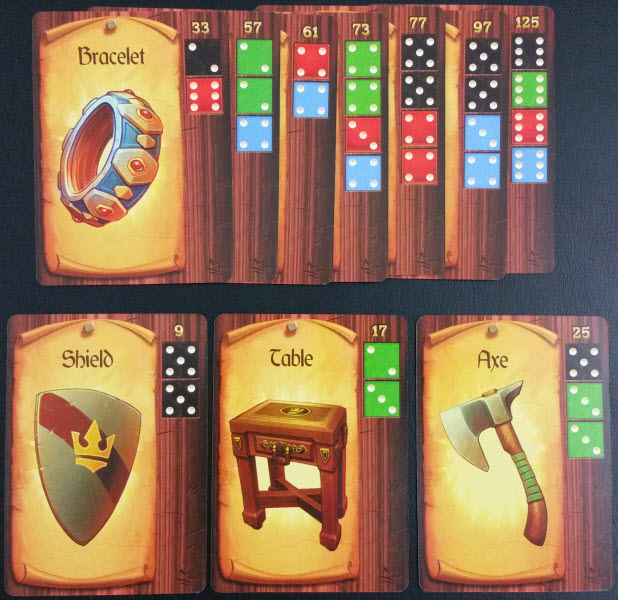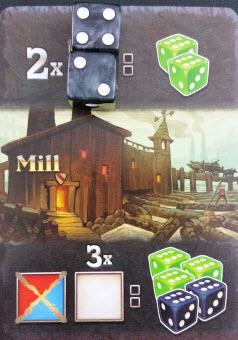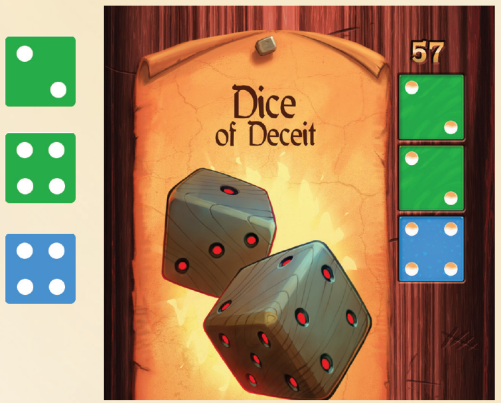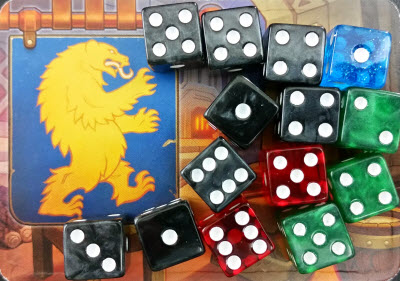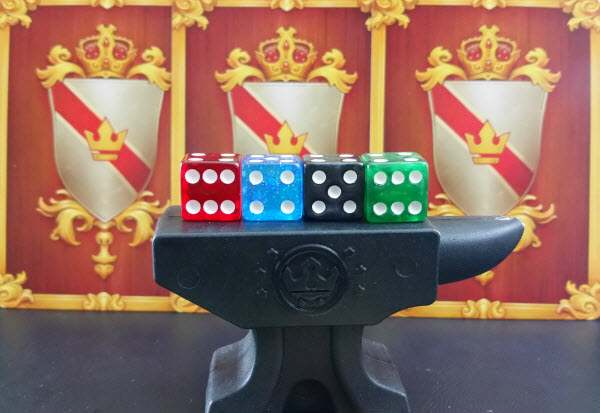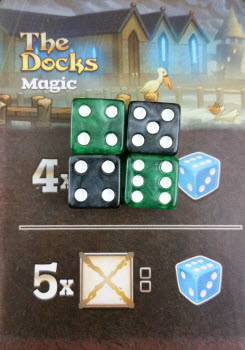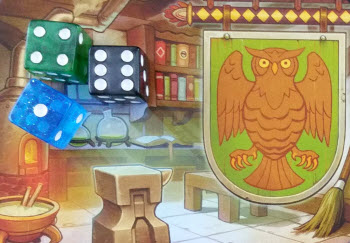Huffing, Aran paused to give his hands a rest from the relentless digging, using the brief respite to mop his sweat-drenched face with a dusty towel. The conditions of the mine were filthy, and he was left exhausted on a daily basis. Yet the work of late hadn’t been this busy since his father worked the very same mine.
He picked up the pickaxe once again and gave a hearty swing into the cave wall. It finally gave way, its hidden content spilling onto the floor. Aran scooped up a pile of his treasured quarry – perfectly cubed chunks of metal – and called an apprentice quarryman over.
“Fill this pile into your cart and take them straight to blacksmith Gaudette in town. He’s expecting them. Make sure you charge extra for a non-standard delivery though. Who knows what the rush is with him lately…”
The Premise
Due to an unfortunate encounter with the headman’s axe, the position of royal blacksmith to King Alphons Sedgwickson III has suddenly become vacant. The king has issued a proclamation that the first person to skillfully craft a series of items from his crafting list shall be rewarded with the status and income befitting the King’s Forge. As lay craftsmen and blacksmiths, players rush to complete these projects first so they may claim the job for themselves.
The Rules
In the dice placement game King’s Forge, the goal is to build all the things. King’s Forge consists mainly of six types of dice and two decks: Craft and Gather. Craft cards are items to be created, whereas Gather cards provide new dice or special abilities.
To begin, a number of Craft cards are randomly chosen depending on player size. Each Craft card depicts the requirements to make the item and a value number, with the three lowest valued Craft cards available to be created.
In addition, seven random Gather cards are combined with four core ones to form the Gather Deck. At the start of every round, the top four Gather cards are revealed. Adjacent to these are four permanent tiles, known as The Docks.
At the beginning of the game, each player receives a player tile and five black (Metal) dice. The first player is determined randomly.
King’s Forge is played over a series of rounds, each broken into two principal phases – coincidentally called Gather and Craft.
In Gather, the player can use one of a Gather card’s two actions by spending the number and type of dice listed in exchange for its reward. For instance, at the East Forest, a player can spend any two dice to receive one green (Wood) die. A new Gather card then replaces it.
Alternatively, the player can discard a Gather card to use a Docks action instead, taking advantage of expensive but powerful actions not readily available elsewhere. A player can also pass, forgoing any further actions. This phase continues until all Gather cards are used or everyone passes.
During the Craft phase, players take turns attempting to make items. First, that player rolls any dice not spent on actions or acquired that round. Next, they may use any gained abilities to manipulate the dice results. If the player then has dice matching the colors and minimum numbers listed on a Craft card, they may craft it, replacing any completed item with the next one from the Craft row.
However, the card isn’t yet theirs. In addition to normal crafting, the player has the option to try stealing another player’s newly minted item using the same crafting rules, except that they must meet the values of the other player’s dice, with at least one die value exceeding them.
At the end of the Craft phase, finished Craft cards are claimed by the player who completed or stole them, and a reset occurs. All cards are cleared, first player rotates, and the Gather deck is reshuffled. Then, a new round begins.
Rounds continue until a player has claimed four or five Craft cards. At that point, the player with the most Craft cards is the winner, having demonstrated their superior skill and aptitude in the smithing ways. They go on to a pleasant life of being in the king’s employ.
Everyone else, back to the forges with ye! Them horses aren’t going to shoe themselves…
An Erratic Fabrication Process
Standard Worker Placement games function with each unit being identical and the strategy resting instead on the actions available to you. The first half of King’s Forge utilizes the similar idea of dice allocation, whereas the second half veers off into dice-rolling territory. As a result, King’s Forge positions itself nicely between a traditional worker placement game and a full-blown dice game – though clearly shading closer to the latter.
The dice placement influence is seen during the Gather phase, where you exhaust dice in exchange for special abilities or new resources, and the public nature of the Craft card requirements provide a general roadmap for you to plan accordingly.
Of course, since dice are involved, seeing a path to victory and getting there are two entirely different things. Strategy in King’s Forge has to be fluid and planning done loosely, due to three key factors:
- The actions available to you changes every single game. Since most Gather cards each playthrough are random, every session of King’s Forge requires slightly different tact.
- The order of Gather cards each round is also randomized. When combined with player size and turn order, there’s no guarantee you’ll consistently get the actions you want.
- Dice in King’s Forge exist as both ‘workers’ and resources, so there’s a constant balancing act between having enough dice for the actions you want each round and having enough to craft the items you need.
This high degree of variability gives King’s Forge a great deal of replayability. Every Gather phase unfolds differently from round to round, let alone between games. Sometimes Gem dice will be readily available, for example, whereas in others you’re better off going out and mining for them yourself.
Surprisingly, Tacticians will be divided on this one, which is a testament to the game’s bifurcated nature. Many in this group will be surprised to see that, dice aside, King’s Forge does contain more strategy than it first appears. They (and others) will appreciate the challenge of formulating a basic plan and leveraging their resources, dice bonuses, and other desired abilities into an advantage.
That said, Tacticians won’t be enthused with the inability to look beyond the round – at most – and the ease at which said plans can completely fall apart due to a single dice roll. Most will be willing to try it, but whether Tacticians come back after a playthrough or two will be up to the individual.
Socializers, by contrast, will easily remain on staff in this workshop. King’s Forge is concise, easy to learn, and engaging, all without being terribly long or complex, which falls squarely into this group’s preferred style of gameplay.
The Law Of Conservation Of Theme
King’s Forge is an unquestionably well crafted and nice-looking game. The game’s vibrant and colorful artwork brings some delightful brightness to the usually dingy act of smithing, burnishing King Forge’s central premise. This is reinforced through equally decent components, from sturdy tiles to sparkly dice.
Yet for all of its luminosity, there isn’t deep flavor buried among the game’s copious dice piles. For a dice game, this isn’t uncommon. King’s Forge has some flavorful parts via gathering resource dice to skillfully craft items, but the theme is uneven and surface-based at best.
This is best illustrated during Crafting. It makes thematic sense during the Gather portion of the game that you must either exhaust one resource to gain another, or you must sacrifice the dice as a form of payment or material exchange for the desired result.
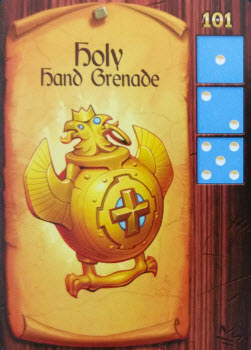
“Oh, Lord, bless this thy hand grenade, that with it thou mayest blow thy enemies to tiny bits, in thy mercy.”
However, for reasons that escape the laws of both science and alchemy, you don’t lose dice when completing a Craft card. Somehow, you get to keep both the raw materials and the finished item.
From a design perspective this is understandable, as losing dice to items – particularly hard to get Gem and Magic dice – would make the game longer and be prohibitively expensive to create costlier items. Yet this compromise grates against the game’s theme.
Given the mostly dice-based nature of King’s Forge, such a mismatch for most players isn’t a huge issue – Architects will actually rejoice at not losing their dice horde for the sake of winning – but it will be too hard for Immersionists to ignore. This group has a hard enough time with lightly-skinned dice games to begin with, and wishing an item into existence once you have the materials won’t help the cause.
A Minor Imperfection
Theme aside, King’s Forge does have one major impurity, being a byproduct of its effort to downplay becoming a full-blown dicecapade. That is, under normal circumstances the unpredictable nature of dice rolling cuts both ways: it’s equally possible for a player to pull ahead as it is for them to fall on ill fortune and allow others to catch up. Because of the different ways King’s Forge tamps down randomness, however, it diminishes that intrinsic catch-up mechanic.
Luck is a big component in King’s Forge, but it’s more constrained than it first appears. Very little in King’s Forge is assured – besides price gouging at the Docks – and yet the game does a great job finding ways to mitigate randomness. Gather cards, for example, only require a type of dice instead of a specific value. There are also a fair amount of bonuses to temporarily manipulate Crafting rolls in your favor. In this way, King’s Forge is commendable for being an erratic dice allocation game whilst still providing players with impactful decisions to make. Daredevils will be quite content hammering out some enjoyment here.
At the same time, although King’s Forge has a healthy degree of competition, an individual’s dice pool is mostly safe from subterfuge. Aside from stealing a crafted item, using the Peddler card to swap dice with an opponent, or using the Cemetery card to nullify a die result (which hurts everyone), the game never drifts into overt conflict.
These traits may be good for maintaining the game’s lighter atmosphere, keeping it in line with the premise of testing a blacksmith’s mallet more than their malice, but it also makes it difficult to stop a runaway leader.
In such cases, you mostly have to hope they roll poorly and that they don’t have bonuses to offset it. Victory margins are tight: if you have three Crafted items while everyone else has one, the odds swing strongly in your favor. In theory, the increased difficulty of higher valued Craft cards would offset this, but since it applies to everyone equally, it can indirectly aid a runaway leader even further.
When you ply all of this together, Strikers should avoid this competition entirely. Even with all of the available dice mitigation, they will only end up frustrated due to King’s Forge’s otherwise high degree of randomness and inability to easily stop someone with a sizable lead.
The Takeaway
It’s quite fitting that King’s Forge is about blacksmithing, because this is visually and substantively one well-crafted game. King’s Forge admirably blends strategically allocating dice towards more and better resources with the tactile pleasure of rolling a handful of dice in the quest to create sought-after items. The need to balance those two sides of the game propels it forward, as players must maneuver an ever-changing array of decisions and the ever-unpredictable nature of dice. King’s Forge is molded around the concept of luck mitigation though, and save for an occasional runaway leader, it executes the idea handily. With just the right mix of simple rules, moderate player engagement, and variable options from one playthrough to the next, King’s Forge easily makes for a Gateway Plus Game worthy of kings and commoners alike.
King’s Forge is a product of Game Salute.
Cardboard Republic Snapshot Scoring (Based on scale of 5):
Artwork: 4.5
Rules Clarity: 4.5
Replay Value: 4.5
Physical Quality: 4.5
Overall Score: 4.5

